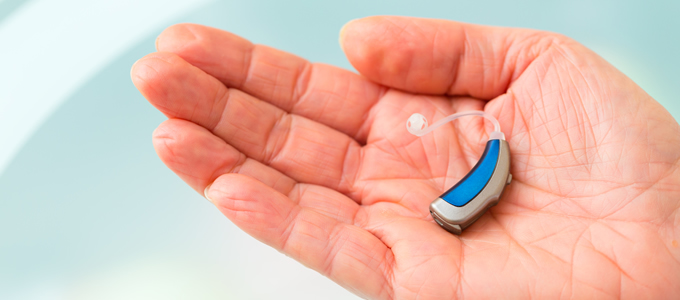
Choosing Hearing Aids
Hearing aids, in one form or another, have been around since the late 1800s. These portable devices have evolved considerably over time. So much so, in fact, that hearing aids can now benefit about 90 percent of all individuals with hearing loss. For many people with hearing difficulties can affect quality of life. Hearing aids can minimize the disruption to daily communications. However, hearing loss cannot be cured, but it can be managed. The younger and sooner hearing loss is addressed, the better someone performs throughout their life.
What Hearing Aids Do
Aside from amplifying sound, hearing aids also reduce distracting background noises that can make it difficult to understand speech and detect sounds. It's typically recommended that hearing aids be worn in both ears to provide better clarity, assuming both ears have hearing loss, or useable hearing. While hearing aids can improve hearing, they won't "cure" or reverse underlying causes of hearing loss. Hearing loss is damage to an ear; hearing aids are not “repairing” the damage, but are working with what is left to improve performance. Different technologies do this slightly differently, but it is important to remember that a hearing aid can only work as well as your auditory system allows. That is why hearing cannot be restored to “normal”, no matter how well the hearing aids function.
Custom and Non-Custom Hearing Aids
Hearing aids have several different form factors – or shapes and sizes. Choosing the ideal style is part of the Hearing Aid Evaluation discussion that is necessary between you and your Audiologist or Hearing Aid Dispenser. The majority of hearing aids fit today are receiver-in-the-canal (RIC) hearing aids. A small piece is fit behind the ear and a wire with the receiver is fit into the ear canal. There are also hearing aids where all parts fit just in the ear canal, we call those in-the-ear hearing aids, and those too have multiple styles. A visit with an Audiologist or Hearing Aid Dispenser will clarify what hearing aids look like, what options are available, and what would best be recommended based on your personal wants and needs.
Choosing the Right Hearing Aid
Hearing aids features include complex directional microphone systems, feedback cancellation, and an assortment of processing and listening programs. Some devices are wireless while others have a convenient remote. All of these choices are great, but sometimes overwhelming for people. It is the function of the Audiologist or Hearing Aid Dispenser to discuss all the options related to hearing aids and all the benefits and limitations of technology. Hearing aids are a complicated and it is the job of your provider to guide you through the decision making process.
Hearing aids are not a one-time purchase or single visit. Hearing aids need to be maintained and hearing health needs to be monitored. No matter how good the technology is that is purchased, they need to be maintained, just like a car. Ears and hearing change throughout a lifetime and adjustments need to be made accordingly. For this reason, patients are encouraged to continually visit the Audiologist for testing and the Audiologist or Hearing Aid Dispenser for cleaning, checking and programming of your hearing aids.
There is no easy solution but with guidance and information, people can successfully use hearing aids to improve communication and protect the auditory system from further deterioration.

